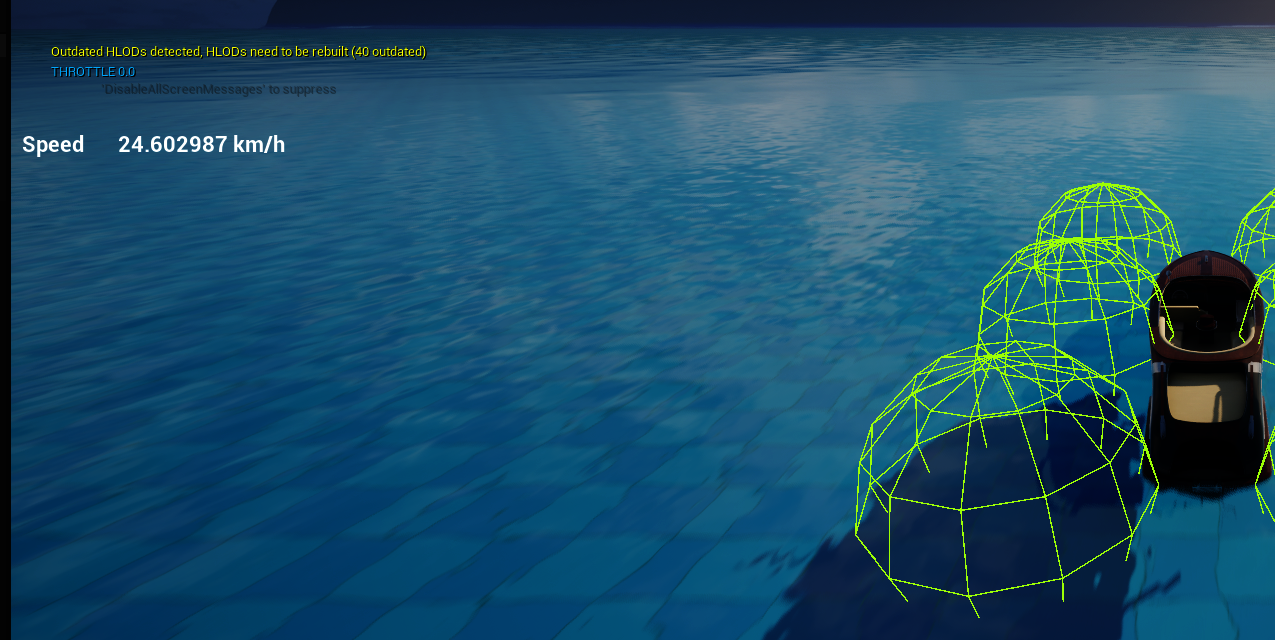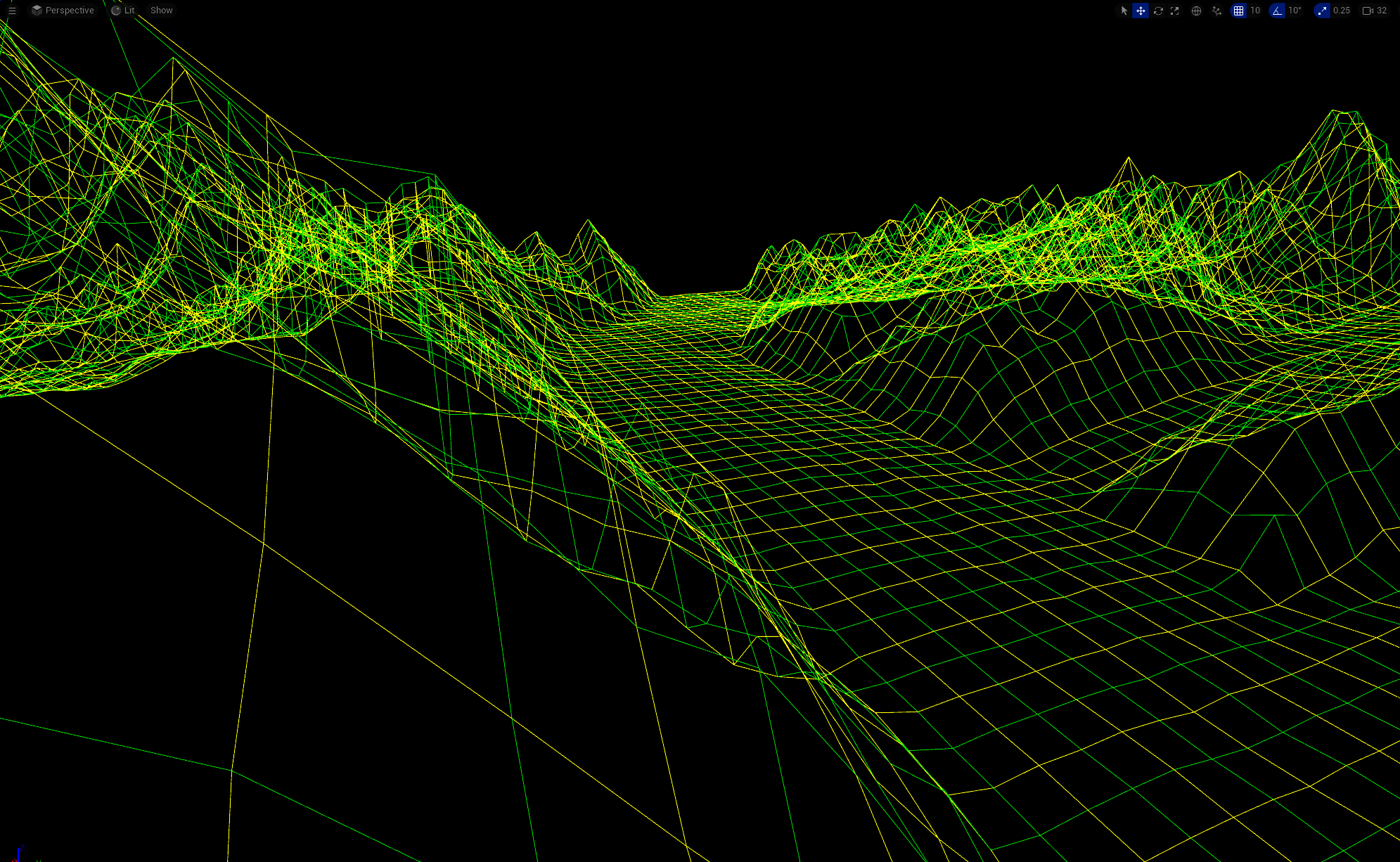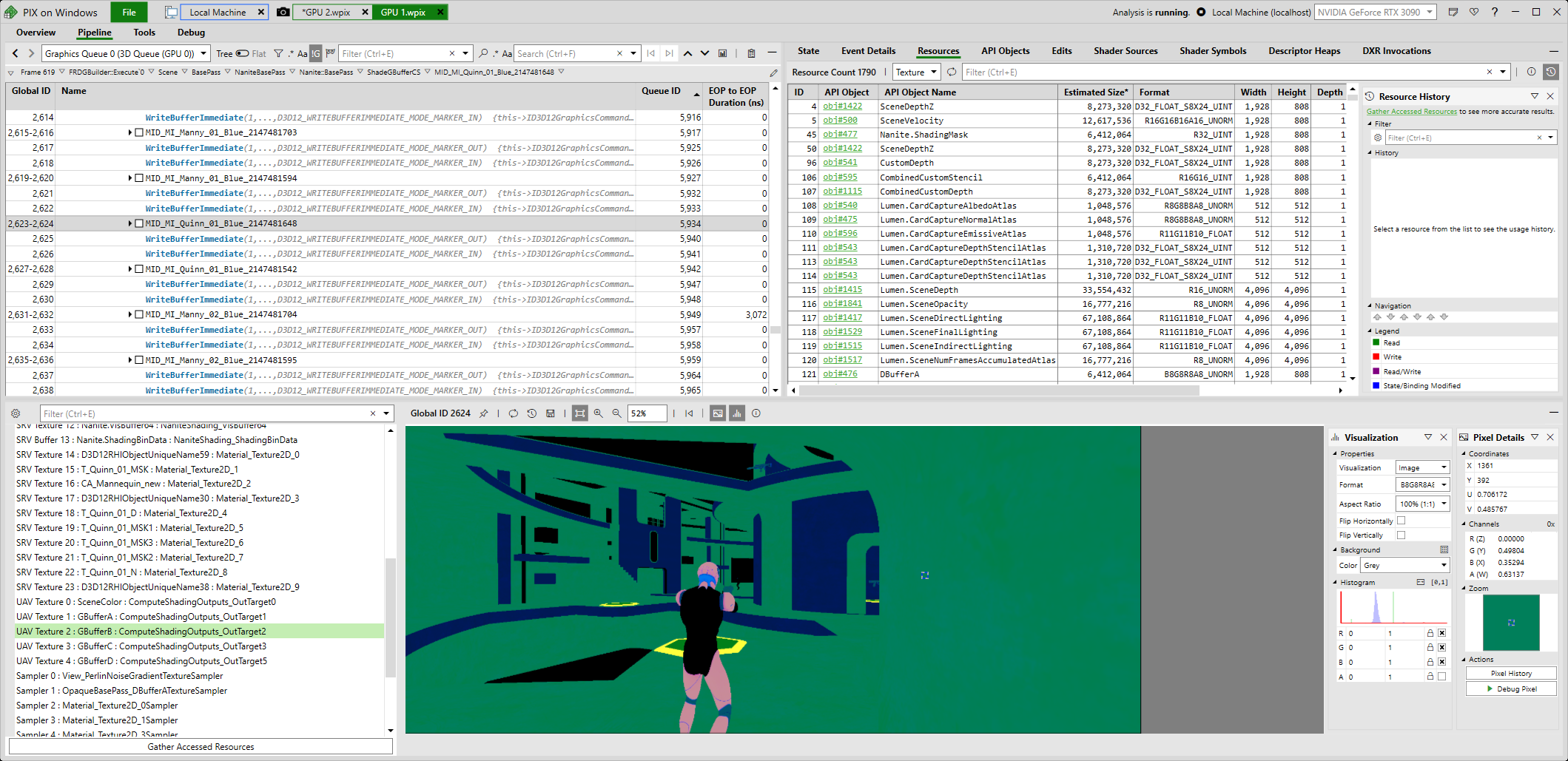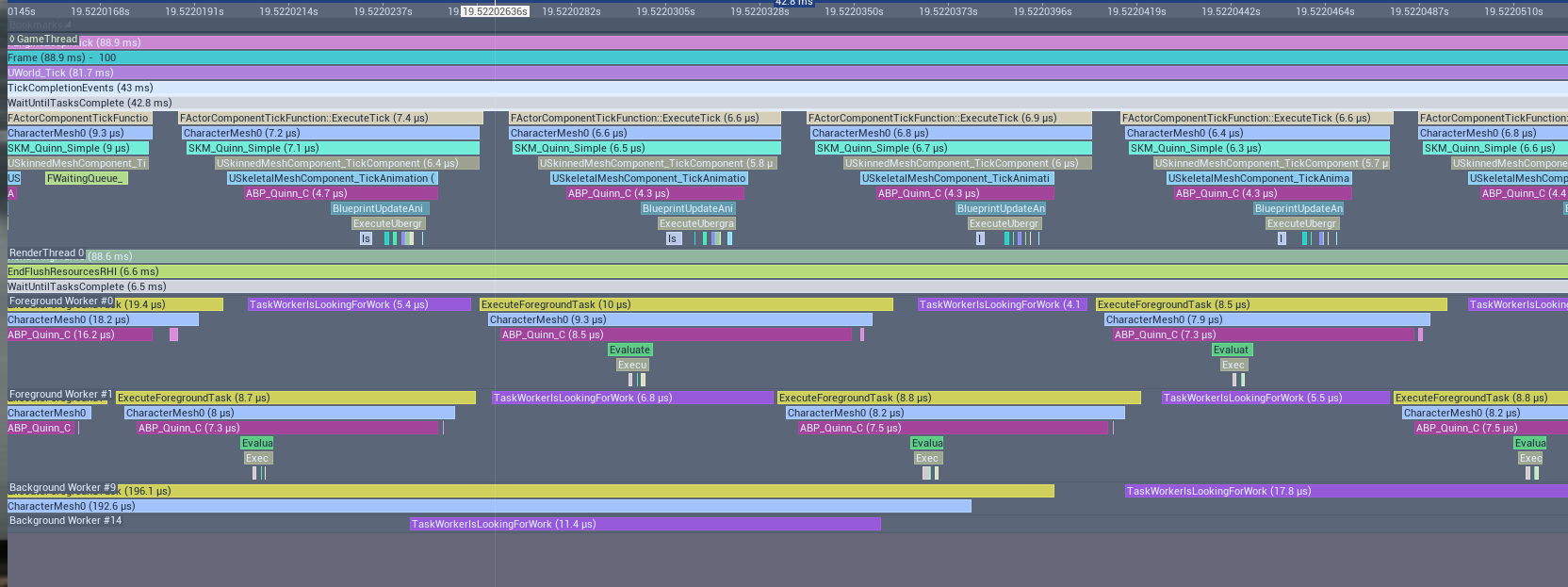Visual Studio 2026 and UE 5.7
This article looks at problems and fixes using the new Visual Studio 2026.
This article looks at problems and fixes using the new Visual Studio 2026.
How to create a pull request and get it merged by Epic
How to pass compiler flags such as /Zc:nrvo- to the Unreal build process.
A HUD consists to two main parts, the user widget which draws on the screen and the HUD class which loads and displays that widget.

This shows how to generate the header and cpp files implementing gameplay tags in C++ as part of the build process for an Unreal project.
How to use Unreal Build Accelerator to speed up C++ compilation by using two machines.
This article describes using some C++ 20 features such as concepts and lambdas with template parameters.
Debugging problems in Mass.
Descriptions of Mass concepts.
This is the first of a series of articles about the Unreal Mass framework.
How to format code using clang format inside Visual Studio 2022.
This discusses making large Unreal landscapes using data from a real-world location using World Partition to support larger maps.

This discusses making large Unreal landscapes using data from a real-world location.
Tessellation is the ability to displace the surface of a mesh or landscape as it is rendered to create the appearance of more detail than the mesh contains. Nanite tessellation requires Unreal Engine 5.4 or higher.
A landscape material is one which is applied to an Unreal Engine landscape object. It is created similarly to any other material in Unreal but can use some special nodes (such as the Landscape Layer Blend node) which only work inside landscapes materials.
While this page is about landscape materials in Unreal Engine, it does not tell you how to make one, it describes how they are made, how important features work, and looks at alternative approaches used in commonly available examples.
GDAL is a translator library for raster and vector geospatial data formats which we can use for converting between file formats, for example for converting geotiff data about real-world locations to heightmaps which can be imported into Unreal.
This page shows how to get the Pix GPU Capture program working with Unreal 5.5.1 so you can debug and profile materials and shaders.

This article is part of a series detailing how to use the AnimToTexture plugin to animate static meshes. It details tests we can run on the actors which use animation textures developed in prior articles
Animation Textures is a technique for storing animation data in a texture and animating the mesh by using a special material to read and replay the animation data.
Animation Textures is a technique for storing animation data in a texture and animating a mesh by using a special material to read and replay the animation data.
In Part 3 we used Unreal Insights to sample performance data and display it like this:

In Part 2 we made a test environment and look at stats usage. Here we use Unreal Insights to determine what specifically is making the project run slow.
This page describes a simple test project which can be used to experiment with optimization in Unreal Engine. The test project is created based on the Game | Third Person | C++ project including the starter content.
This article explores project build configurations.
If we derive a C++ class from an existing Unreal class, and that existing class contains components, we can extend (subclass) those components without changing the source code of the base class.
This is an attempt to understand the Unreal Game Features Subsystem. The Game Features Subsystem is used in the Valley of the Ancient and Lyra examples, and in Fortnite, to distribute game assets and functions as plugins.
What does "Listener must have a valid id to update its sense config" mean?
A delegate is a object which can be used to call:
How Lyra binds imput actions to gameplay abilities
How Lyra manages which abilities can be activated when
How Input Mapping Contexts work and how Lyra uses them
How Gameplay Tags work and how Lyra uses them
The aim of this is to examine the source code from the Lyra example provided by Epic Games and to try and identify and document practices and approaches for using c++.
Here we look at use of Gameplay Tags and the Gameplay Ability System (GAS), and try and trace the use of gameplay tags from pressing a button to getting a response in the UI and in gameplay.
Examining the source code from the Lyra example provided by Epic Games and to try and identify and document practices and approaches for using c++.
The page PhysicsUsingBlueprints describes the creation of a simple physics example implementing a trebuchet using blueprints.
This page describes implementing the same thing using Python.
The page PhysicsUsingBlueprints describes the creation of a simple physics example implementing a trebuchet using blueprints.
This page describes implementing the same thing using c++.
This describes some initial steps in using chaos physics in Unreal Engine 5.0.2.
This post documents how a UObject functions in Unreal Engine and how the classes generated by the Unreal Header Tool (UHT) work.
Unreal Engine supports plugins, which contain code and game content. They can also wrap a third party library (on Windows, one or more .dll files) and allow the functionality of that library to be called directly from C++ and indirectly using Blueprint objects which are part of the plugin.
ffmpeg is a cross-platform solution to record, convert, and stream audio and video. It can be used from Unreal Engine to change image formats, to record gameplay, and to convert content to and from various video formats. Here I am using it just to show how an Unreal Engine plugin can be developed.
This post is about creating a new Blueprint node in c++ to rotate an Actor object around a pivot point.
This describes one approach to making GIF files from Unreal Engine. This approach is used to make the GIF files on this site.
Comparing the error messages created by Clang and by MSVC.
Updated for Unreal Engine 5.0
This document describes the basics of reading and writing Json with Unreal Engine classes. The code here reads and writes elements explicitly rather than reading and writing entire structs at one time. This is suitable for objects which are not using the UCLASS or UOBJECT macros to create reflection data.
Using Slate UI Classes from C++
Updated for Unreal Engine 5.0
Reflection is the ability to inspect C++ classes and objects at runtime and gather information about their data types and properties. Normally C++ does not maintain programmer-accessible information about, say, what members a struct or class has. Unreal Engine uses macros such as UCLASS and UPROPERTY to create information about classes, structs, methods, properties, and to make that information available to C++ at runtime.
Updated for Unreal Engine 5.1.1
This is a brief guide to downloading and building UE5 using git command line tools and Visual Studio 2022. Updated for Unreal Engine 5.1.1 and Visual Studio 2022 17.4.4
A brief guide to Visual Studio 2022 setup for working with Unreal Engine